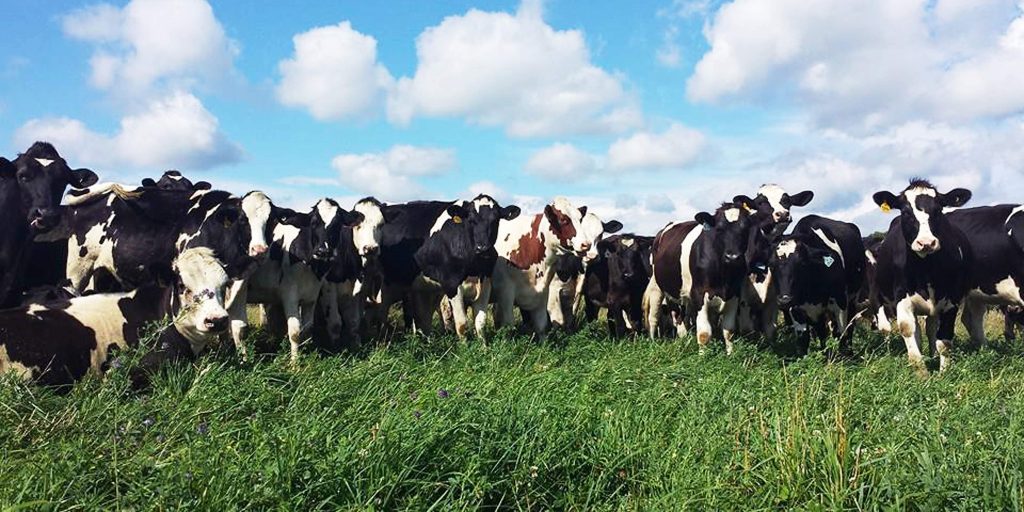
Starting in 2009, the Pasture Dairy Center at the W.K. Kellogg Biological Station pioneered automatic robotic milking combined with data-driven intensive rotational grazing methods for dairy cattle. After 15 years of innovation and education related to robotic milking and rotational grazing, the Pasture Dairy Center project was completed in 2024; cows and equipment have been sold to other farms in need. The robotic milkers used at KBS were the second and third such units installed in Michigan, and combined they amassed over 1,500,000 milkings between the two machines. These robots remained operational for 15 years and were instrumental in informing the rapid adoption of robotic milking systems across Michigan.
Wide ranging research conducted at the Pasture Dairy Center
Dr. Santiago Utsumi led research at the Pasture Dairy Center, including those that pioneered methane and nitrous oxide emission measurements with cattle and connected greenhouse gas emissions to management practices. Other scientists, including Dr. Janice Siegford, determined how automatic milking systems influenced dairy cow behavior, health, welfare and management decisions. Along the way, a partnership with Dr. Paul Bartlett in the MSU College of Veterinary Medicine explored how to eliminate Bovine Leukemia Virus from dairy herds via selective culling of infected and contagious cattle.
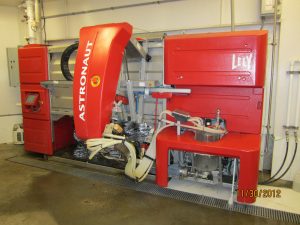
Dr. Utusmi also discovered how to combine intensive rotational grazing guided by data with robotic milking. Data driven pasture management was fine tuned for optimizing forage production and quality to sustain high producing dairy cows. Crucial to this effort was the integration of weekly forage measurements using an ATV and laser guided forage biomass measurement system. This provided data on growth rates that could be used to predict optimal rotations, forage surpluses (for harvesting as winter feed) and upcoming deficits when supplementation was necessary.
Rob Ashley was the first Dairy Farm Manager at the PDC, followed by Howard Straub III starting in 2012. These dairy experts quickly realized that integration of robotic milking and rotational grazing is more complicated than one might think. Robotic milking requires continuous traffic of individual cows to visit the robots, but traditional dairy grazing involves large groups of cows grazing a pasture, then all brought into the barn to milk before going to the next pasture. The innovations at KBS pioneered a system to allow for continuous milking while also rotating pastures every 8 or 12 hours to continue to provide high quality feed that the cows harvested themselves. The integration of annual forage crops into a farm that relies primarily on perennial crops was another research highlight from the PDC. It was learned that annuals can provide high quality forage at times of years (mid-summer, late fall/winter) when perennials tend to be slow growing.
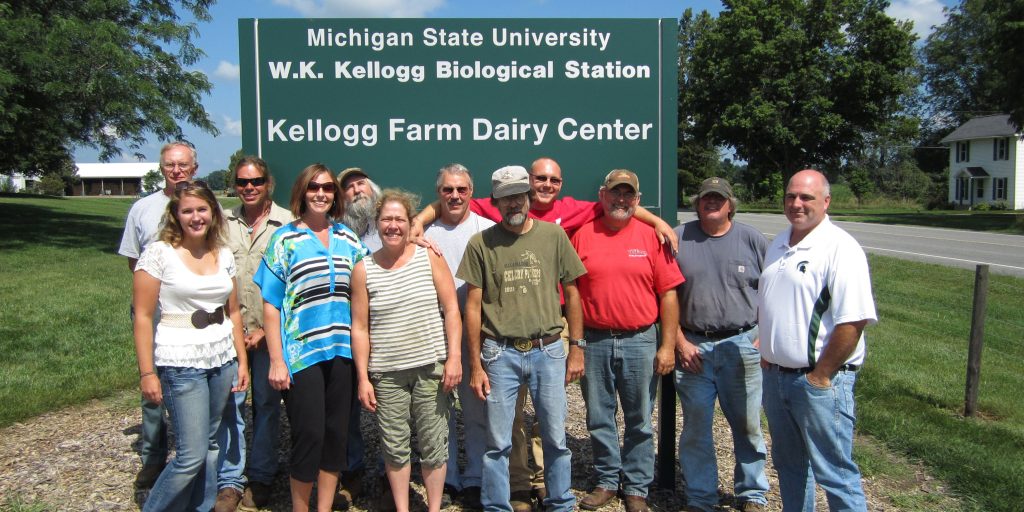
Adjacent research efforts focused on manure, antibiotic resistance and methods to reduce antibiotic use in dairy cattle. Manure from the Pasture Dairy Center was used to support multiple cropping system research projects, including the Long-Term Agroecosystem Research, or LTAR, program, where scientists are evaluating how manure contributes to soil health and greenhouse gas emissions from agricultural soils. Multiple other projects evaluated antibiotic use in livestock and potential spread of antibiotic-resistant bacteria into the environment. Innovative methods such as selective dry cow antibiotic treatment were evaluated at KBS to try to minimize antibiotic use in dairy cattle.
Education and outreach
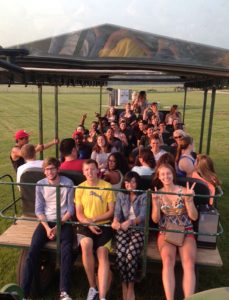
The Pasture Dairy Center was used for numerous extension and outreach activities, primarily organized by Matt Haan in the early years and Misty Klotz in the later years. These activities included the MSU Grazing School, public open houses, national and international visitors, and publications. The MSU Grazing School was hosted at KBS for over five years, where dozens of farmers were educated on the details of successful grazing operations. A climate change and agriculture fact sheet was produced to highlight the interrelationship between these topics.
Thousands of professional and public visitors came to KBS each year to watch the cows get milked by robots, learn about the innovation, and take in the scenes while the Pasture Dairy Center was operational. The facility was truly a hot spot for showcasing novel research at MSU.
You might be wondering what’s next for the land and facilities that were used for this effort. KBS will prioritize hosting research and education that integrates agricultural innovation and ecology. The ideas for new projects are typically led by scientists and Extension professionals at KBS and Michigan State University, and there’s no shortage of new ideas already emerging for the space. Some of these that are likely to be incorporated in the coming year include:
- Row crop irrigation efficiency research
- Precision agriculture innovation including drone-based crop management
- Cover crop grazing
- Ecologically sound integration of solar energy production on farms
- Soil health and greenhouse gas impact of converting perennial pasture to cropland
We are sad that there’s no longer an option for visitors to come out and see cows getting milked by robots but are also excited for these emerging innovations that are likely to be at the forefront of agricultural sustainability soon.
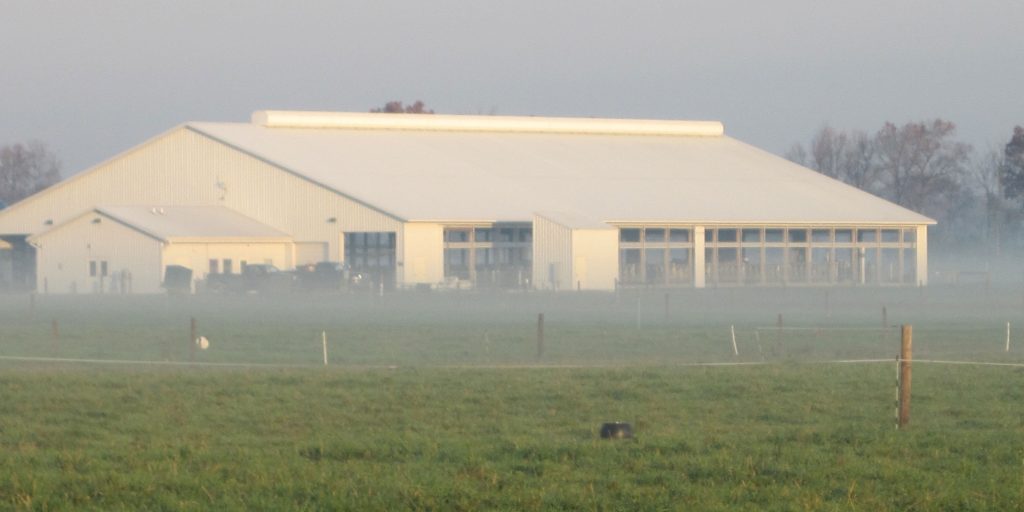
~~~~~~~~~~~~~~~~~~~~
This feature was written by Brook Wilke and Howard Straub III.
~~~~~~~~~~~~~~~~~~~~

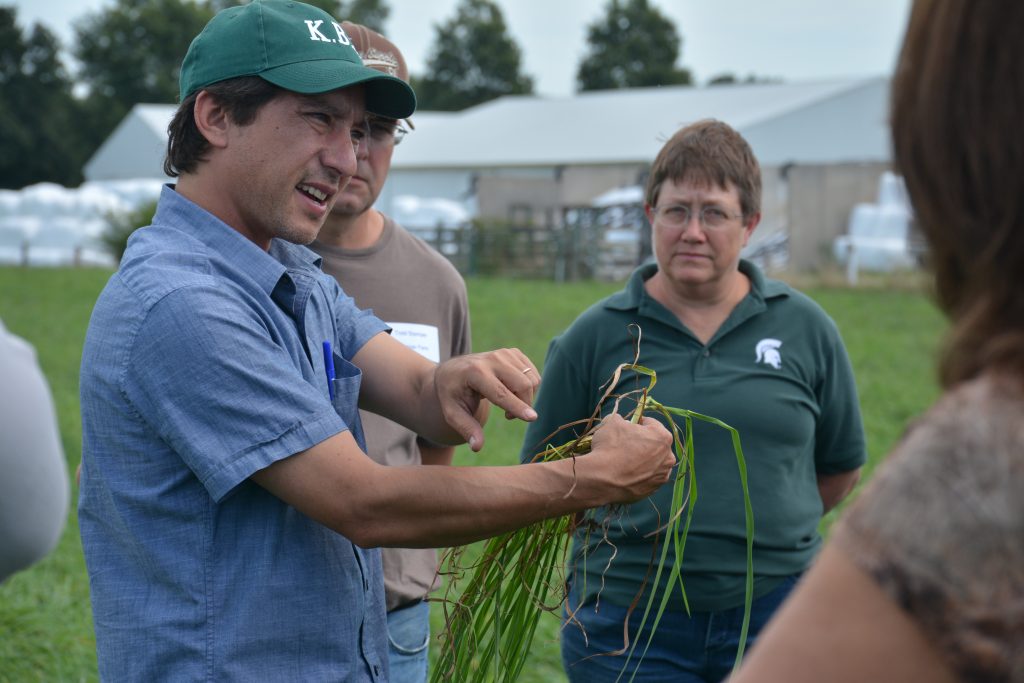
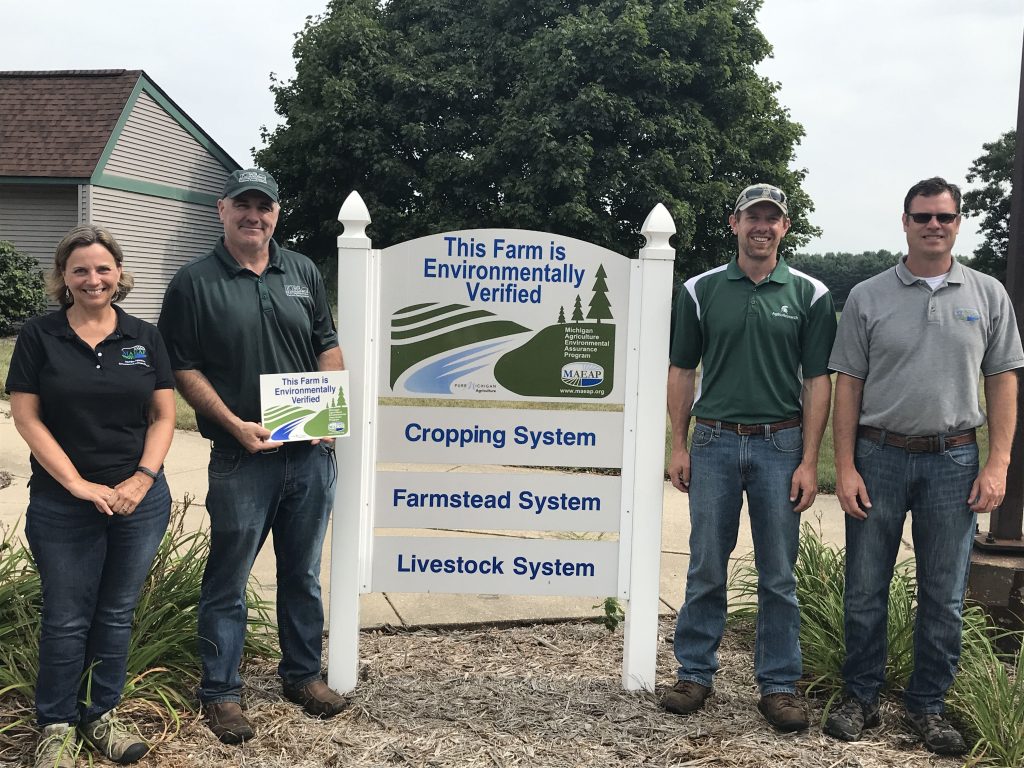
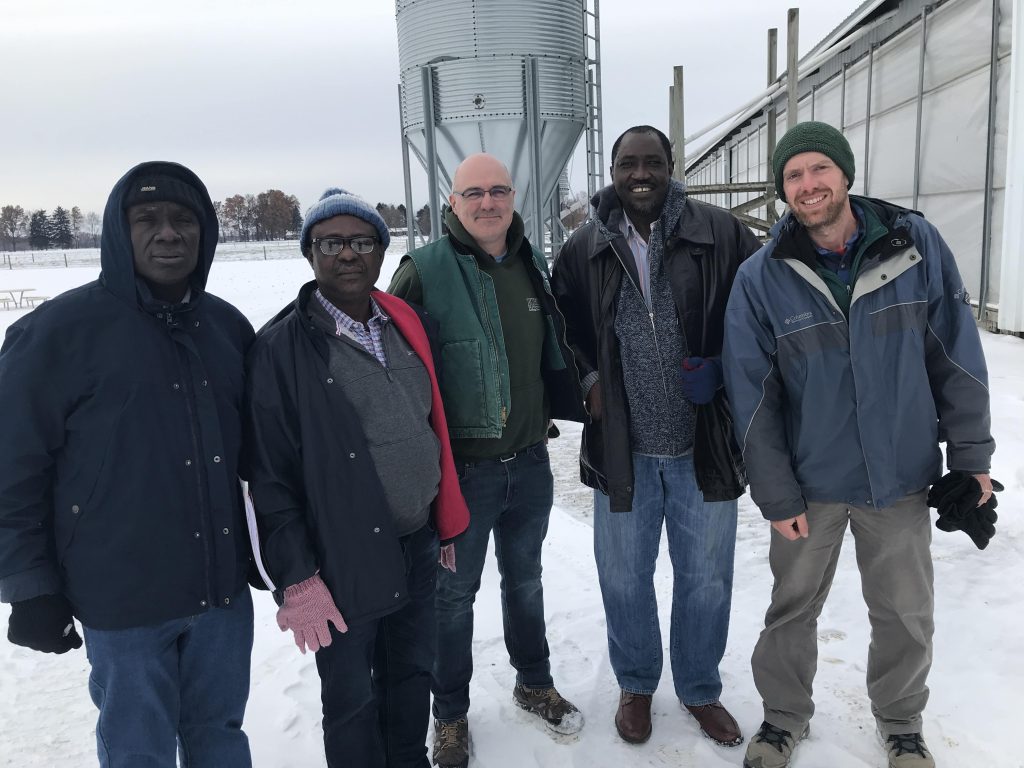
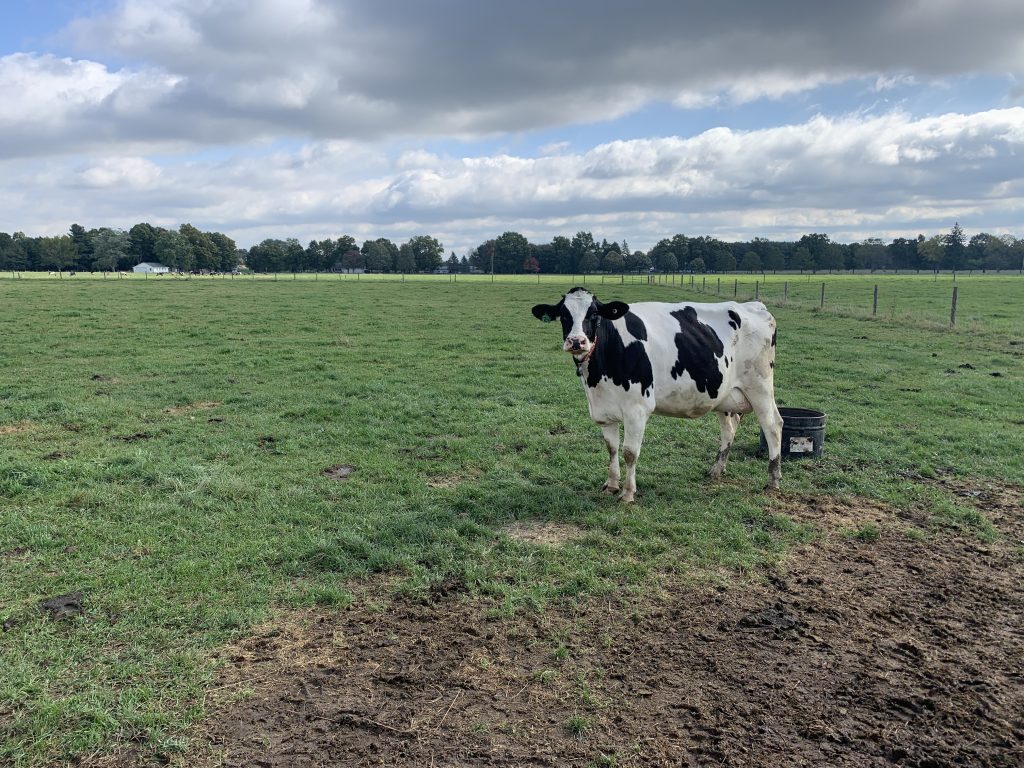


A legacy of conservation; a commitment to sustainability.
3700 E. Gull Lake Drive
Hickory Corners, MI 49060
(269) 671-5117
info@kbs.msu.edu